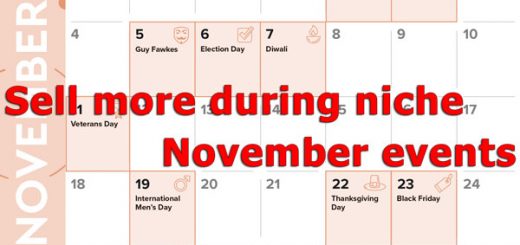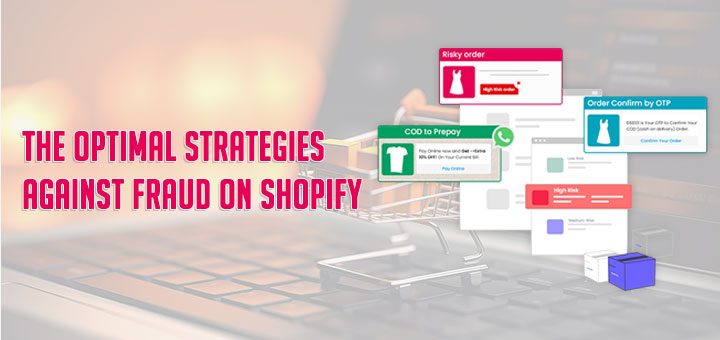15 ways to help you make your first sale on Shopify
Through Social Media
These days, social media probably seems like the clear place to tackle your first sale, but which platform should you choose? It depends.
1. Facebook
Facebook is still the giant of the social media world, and its huge array of users makes for a great pool of potential customers. You can set up your shop in the Facebook Marketplace and make it so your customers don’t even have to leave Facebook to make the purchase. Facebook also makes it really easy to run ads to targeted demographics based on location, interests, you name it.
2. Linked
In Looking to sell business to business? LinkedIn might be the best fit for you! It’s one that a lot of people forget about as an opportunity for sales. It’s a great place to build business connections and reach out to potential customers.
3. YouTube
Who could have foreseen the popularity of unboxing videos? Not us, but what a great way to reach potential customers. You can create a channel dedicated to reviewing and unboxing your products, or you can contact other influencers in the unboxing niche to do it.
4. Pinterest
For lovers of DIY, advice, and aesthetically pleasing outfits, Pinterest can be a goldmine for certain types of eCommerce businesses. To use it effectively, create high-quality and beautiful images of your product or a useful and fun infographic on how your product solves a problem. Connect with others in the same space, re-pin their pins, and start to build your community there.
5. Instagram
Speaking of aesthetically pleasing outfits, Instagram has become the beautiful dream of many businesses. Instagram has really stepped up its social shopping game, implementing shoppable tags, post-style sponsored images, and a link in your profile page straight to your website. It’s also one of the hotbeds for influencers, so consider what popular Instagrammers might be a good fit to promote your product.
6. Influencers and Affiliate Marketing
We touched on this a bit above, but it deserves its own tip. Influencers and affiliate marketing are only gaining ground, and if you’ve watched a YouTube video or scrolled through Instagram in the last month, you’ll know. However, you’ve probably also seen it done well… and not so well. There are a few ways you can pull this off successfully. One way you can do this sends a free product and ask them to review it. This isn’t always guaranteed and may just waste away in the piles of stuff they already get. Another way is to contact them and negotiate how much it will cost for them to review your product. Make sure that you choose an influencer who is relevant to your product — makeup brushes and beauty gurus, for example. Also, generally, the more freedom you give them to review your product honestly will come across the most genuinely and resonate best with their viewers.
Being Search-Friendly
Your customers can’t buy from you if they can’t find you! Make sure you’re making yourself available in a few different ways.
7. Google Maps
If you have a physical store, do not brush off putting the location on Google Maps. Despite what you might think, a decent chunk of customers prefer to shop at physical locations, and a lot do a mixture of both online and in-person shopping. By putting your location on the map, you’ll encourage visitors and start building up reviews.
8. Search Engine Optimization
SEO doesn’t have to mean cramming as many keywords into every sentence as possible, and knowing the best practices is vital to properly set up your online store. You should figure out what your target keywords are (make them relevant and clear), and read up on how to best implement them into your site, from the URL to the image file name.
9. Mobile-Friendly
Despite something like 99% of the US population owning phones, a shocking number of eCommerce websites (and websites in general) do not have a responsive, mobile-friendly design. Get ahead of the game and open yourself up to mobile shoppers and desktop shoppers alike by making sure that both of them love the experience of browsing your wares.
Boosting Your Reputation
People don’t buy from companies they don’t trust, so focus on building a reputation for yourself as a knowledgeable and legitimate business.
10. Blogging
Writing articles and blogs is a great way to start increasing your site’s reputation in the Google algorithm and boost your domain authority. It’s also the perfect opportunity to draw in a bigger audience and convert one of those readers into a customer! Write about topics related to your business and start positioning yourself as an expert in your field. As an added bonus, it provides an excellent opportunity for guest posts. Once you’ve gained some traction on your blog, you can reach out to other businesses in your field (but not competing, of course), and offer to swap guest posts — that way, ideally, you can share some of your viewer bases and maybe get a sale from that new audience.
11. Join Forums
Forums are a more interpersonal way to interact with potential customers, and they can be successful as long as you come across as genuine and not too spammy. Quora is a good example of this. Find people asking questions you can answer, and put a lot of thought and energy into providing an in-depth and helpful response. Reddit is another forum-style website where you can join sub-communities in your niche. Focusing on selling should, counter-intuitively, take a backseat. If you instead make it your priority to build a rapport with the community and help people, purchases will naturally follow.
Targeting and Enticing
Sometimes the biggest hurdle is getting people to click, whether it’s clicking a link to your website or purchasing a product. Here are some tips on how to get them to press the big red button.
12. Ad Campaigns
Running an ad campaign can help you encourage engagement, reach a wider audience, and start honing in on who your customers are going to be. You can run a brand awareness campaign to just get your name out there, or provide incentives for engagement.
13. Discount Codes and Sales
Speaking of incentives, discount codes and sales can help you convince people who might otherwise just scroll past your post to click and browse your site. You can include a discount code with your ad campaign, or you can advertise a sale that’s happening for a limited time.
14. Email Marketing
Not only is email marketing severely neglected by a lot of companies, but it’s also the perfect way to get a second chance at a customer that clicked away. If you can get someone to sign up for more information, you can use that to send out newsletters, give shop updates and exclusives, and targeted sales. Anything to get them on the site again!
15. Offer Free Shipping
Finally, try offering free shipping. This can be done by offering completely free shipping, free above a certain minimum, or free ground shipping (pay extra to get it there faster). Free shipping seems to be one of those golden tickets to getting customers to commit, and when you make it free above a certain minimum, it can have the added bonus of making that first sale a sale of multiple products.








